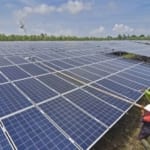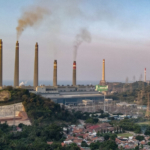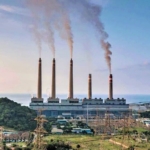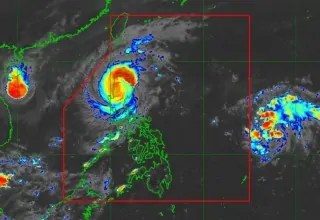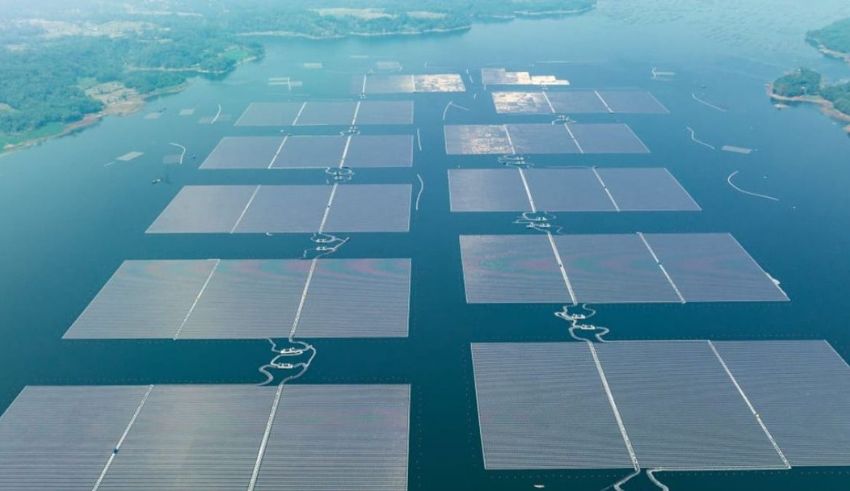
In a monumental step toward a sustainable future, Indonesia proudly unveiled the Cirata floating solar farm—a groundbreaking initiative that now claims the title of the largest in Southeast Asia. President Joko Widodo, in a poignant address, shared the nation’s elation in transforming an ambitious vision into reality—a vision that envisaged Indonesia as a frontrunner in renewable energy on a grand scale.
A Groundbreaking Move by Indonesia
Nestled strategically on a vast 200-hectare reservoir in West Java, merely 130 kilometers from the bustling heart of Jakarta, Cirata signifies more than a mere energy endeavor. It represents Indonesia’s unwavering commitment to environmentally conscious power solutions.
President Joko Widodo, recognizing the historic significance, noted, “Today is a historical day because we managed to build the largest floating solar farm in Southeast Asia and the third biggest in the world.”
This solar farm isn’t just about capturing the sun’s energy; it’s a testament to resourceful use of existing assets. The expansive reservoir serves not only as a platform for solar panels but also as a reservoir for water conservation—a dual-purpose innovation emblematic of sustainable infrastructure.
Onto Greener Pastures
Crafted through a collaborative synergy between Indonesia’s national electricity company, Perusahaan Listrik Negara, and Abu Dhabi-based renewable energy company Masdar, the Cirata project represents a monumental stride toward Indonesia’s ambitious target of achieving net-zero emissions by 2060. The project’s completion, following three years of meticulous planning and a $100 million investment, underscores the nation’s dedication to diversifying its energy resources.
The funding for this ambitious endeavor flowed in through international alliances with Sumitomo Mitsui Banking Corporation, Societe Generale, and Standard Chartered, underscoring global support for Indonesia’s clean energy aspirations.
The solar farm itself boasts an impressive array of 340,000 panels, strategically positioned to maximize exposure to sunlight. Beyond its sheer scale, this solar array stands as a testament to the technological prowess in harnessing solar energy.
Despite Indonesia’s historical reliance on fossil fuels for electricity, the government has boldly pledged to halt the construction of new coal-fired power plants. The realization of the Cirata floating solar farm sends a resounding message that Indonesia is earnestly diversifying its energy portfolio, taking substantial strides toward sustainability.
However, the nation encounters challenges, with solar and wind power contributing less than one percent to its energy mix. Cirata’s capacity to generate electricity sufficient for 50,000 households serves as a tangible illustration of the impact of transitioning toward renewable energy.
Keep Reading
Global Shift to Cleaner Energy
The global shift toward cleaner energy is not without its intricacies. Indonesia, as the world’s largest nickel producer, plays a pivotal role in the electric vehicle market. Yet, the industry faces hurdles, with some nickel smelters—crucial for electric vehicle batteries—relying on coal-based power sources.
The Cirata floating solar farm not only cements Indonesia’s status as a regional trailblazer in renewable energy but also reflects the delicate equilibrium required for economic growth and environmental stewardship. As the third-largest floating solar farm globally, Cirata serves as a beacon of hope for Indonesia’s clean energy aspirations.
The complexities and triumphs of projects like Cirata underscore the intricate dance between economic development and environmental responsibility. Indonesia’s trajectory toward a greener future will likely be shaped by the lessons gleaned from this milestone, setting the stage for a more sustainable, resilient energy landscape.
